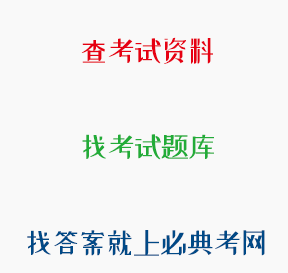正确答案: C
Studying babies' cries helps us understand their speech perception.
题目:请阅读Passage 2,完成1~5小题。 Passage 2 Several research teams have found that newborns prefer their mothers' voices over those of other people.Now a team of scientists has gone an intriguing step further: they have found that newborns cry in their native language."We have provided evidence that language begins with the very first cry melodies," says Kathleen Wermke of the University of Wurzburg,Germany,who led the research. "The dramatic finding of this study is that not only are newborns capable of producing different cry melodies,but they prefer to produce those melody patterns that are typical for the <u> ambient </u> language they have heard during their fetal life,within the last trimester," said Wermke."Contrary to orthodox interpretations,these data support the importance of human infants' crying for seeding language development." It had been thought that babies' cries are constrained by their breathing patterns and respiratory apparatus,in which case a crying baby would sound like a crying baby no matter what the culture is,since babies are anatomically identical."The prevailing opinion used to be that newborns could not actively influence their production of sound." says Wermke.This study refutes that claim: since babies cry in different languages,they must have some control (presumably unconscious) over what they sound like rather than being constrained by the acoustical properties of their lungs,throat,mouth,and larynx.If respiration alone dictated what a cry sounded like,all babies would cry with a falling-pitch pattern,since that's what happens as you run out of breath and air pressure on the throat's sound-making machinery decreases.French babies apparently didn't get that memo."German and French infants produce different types of cries,even though they share the same physiology," the scientists point out."The French newborns produce 'nonphysiological' rising patterns," showing that the sound of their cries is under their control. Although phonemes—speech sounds such as "ki" or "sh"—don't cross the abdominal barrier and reach the fetus,so-called prosodic characteristics of speech do.These are the variations in pitch,rhythm,and intensity that characterize each language.Just as newboms remember and prefer actual songs that they heard in utero,it seems,so they remember and prefer both the sound of Mom's voice and the melodic signature of her language. The idea of the study wasn't to make the sound of a screaming baby more interesting to listeners-good luck with that-but to explore how babies acquire speech.That acquisition,it is now clear,begins months before birth,probably in the third trimester.Newborns "not only have memorized the main intonation pattems of their respective surrounding language but are also able to reproduce these pattems in their own [sound] production," conclude the scientists.Newborns' "cries are already tuned toward their native language" ,giving them a head start on sounding French or German (or,presumably,English or American or Chinese or anything else: the scientists are collecting cries from more languages).This is likely part of the explanation for how babies develop spoken language quickly and seemingly without effort.Sure,we may come into the world wired for language (thank you,Noam Chomsky),but we also benefit from the environmental exposure that tells us which language. Until this study,scientists thought that babies became capable of vocal imitation no earlier than 12 weeks of age.That's when infants listening to an adult speaker producing vowels can parrot the sound.But that's the beginning of true speech.It's sort of amazing that it took this long for scientists to realize that if they want to see what sounds babies can perceive,remember,and play back,they should look at the sound babies produce best.So let the little angel cry: she's practicing to acquire language.
解析:推断题。A项在最后一段中没有被提及。该段指出以前科学家认为婴儿在出生后三个月才开始语言习得的观点是不正确的,故B项无法从原文推出。根据“…if they want to see what sounds babies can perceive,remember,and play back,they should look at the sound babies produce best.So let the little angel cry: she's practicing to acquire language”可知,婴儿的哭声也是科学家研究的重点,而且研究婴儿的哭声可以了解婴儿的言语知觉,故D项错误,本题选C。
学习资料的答案和解析:
工作年限
导向功能
调控功能
评价功能
综合课程
心智技能
胆汁质
为了学习去锻炼
扁鹊
- When a teacher asks students to discuss how the writer's ide
- 依据《中华人民共和国未成年人保护法》,依法设置的专门学校(
- 如果学生要学习的知识内容比较复杂、结构化程度很高,又必须在较
- 指出下列推理中正确的一项是:( )
- 以下不属于教师的义务的是( )。
- 教师资格证-高中英语2022冲刺密卷答案解析(06.13)
- 学生干部选举前,有的家长给班主任陈老师送来礼物请求照顾,陈老
- 课堂提问需要遵循哪些原则?课堂提问能提高学生哪方面的能力?
- 教师让四名学生每人去拿一只桌球,不论什么颜色。学生拿了球后,
- 材料: 创新是一个人人熟知的名字,但创新到底意味着什么?

 川公网安备 51012202001360号
川公网安备 51012202001360号